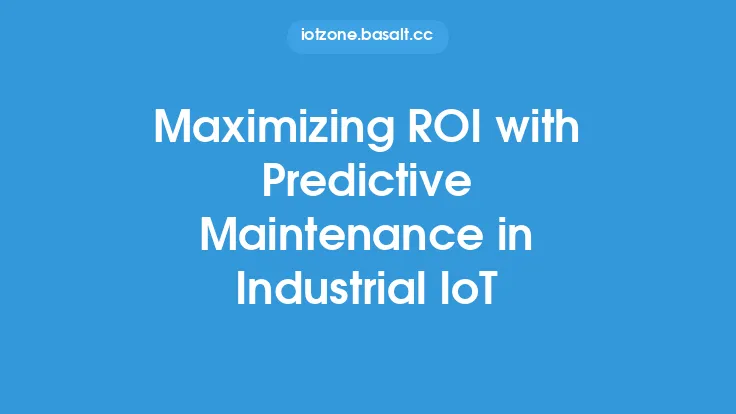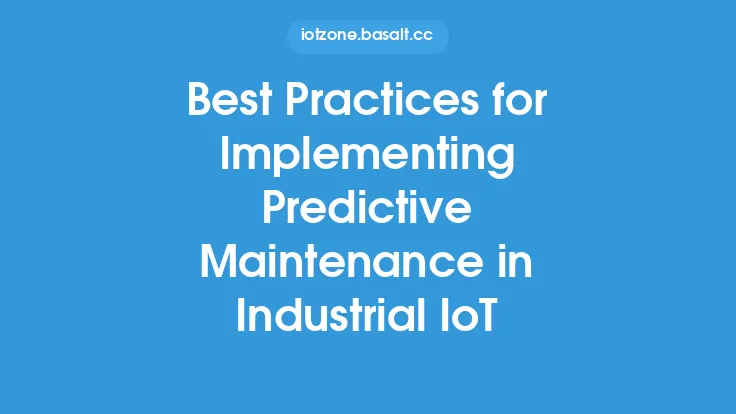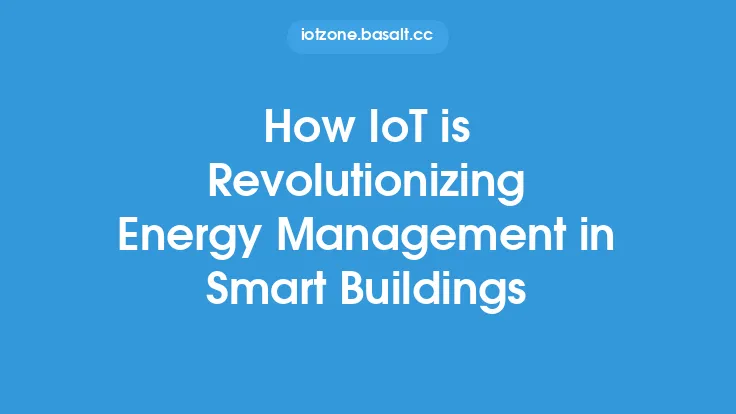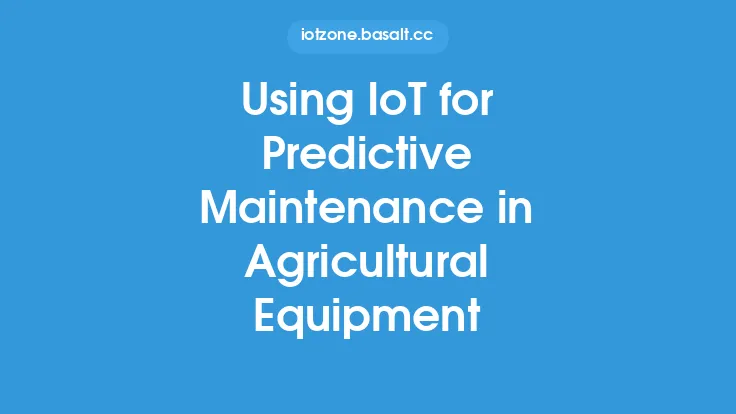The increasing demand for energy, coupled with the need to reduce maintenance costs and improve overall efficiency, has led to a significant interest in the application of Internet of Things (IoT) technologies in the energy sector. One of the most promising applications of IoT in this domain is predictive maintenance, which involves using real-time data and advanced analytics to predict when equipment is likely to fail, allowing for proactive maintenance and minimizing downtime. In the context of energy infrastructure, predictive maintenance can have a significant impact on reducing costs, improving reliability, and enhancing overall performance.
Introduction to Predictive Maintenance
Predictive maintenance is a proactive approach to maintenance that uses data and analytics to predict when equipment is likely to fail, allowing for maintenance to be scheduled and performed before a failure occurs. This approach is in contrast to traditional reactive maintenance, where maintenance is performed after a failure has occurred, and preventive maintenance, where maintenance is performed at regular intervals regardless of the equipment's condition. Predictive maintenance uses a combination of sensors, data analytics, and machine learning algorithms to identify patterns and anomalies in equipment behavior, allowing for the prediction of potential failures.
IoT Technologies for Predictive Maintenance
A range of IoT technologies are used to support predictive maintenance in energy infrastructure, including sensors, communication protocols, and data analytics platforms. Sensors are used to collect data on equipment performance, such as temperature, vibration, and pressure, which is then transmitted to a central location for analysis. Communication protocols, such as Wi-Fi, cellular, and satellite, are used to transmit data from sensors to the central location, while data analytics platforms are used to analyze the data and predict potential failures. Some of the key IoT technologies used in predictive maintenance include:
- Condition-based monitoring sensors: These sensors monitor equipment condition in real-time, providing data on temperature, vibration, and other parameters that can indicate potential failures.
- Predictive analytics software: This software uses machine learning algorithms and statistical models to analyze data from sensors and predict potential failures.
- Cloud-based platforms: These platforms provide a centralized location for data storage and analysis, allowing for real-time monitoring and prediction of equipment performance.
Applications of Predictive Maintenance in Energy Infrastructure
Predictive maintenance has a range of applications in energy infrastructure, including:
- Wind turbines: Predictive maintenance can be used to monitor the condition of wind turbine blades, gearboxes, and generators, predicting potential failures and reducing downtime.
- Solar panels: Predictive maintenance can be used to monitor the condition of solar panels, predicting potential failures and optimizing energy output.
- Power transmission and distribution: Predictive maintenance can be used to monitor the condition of power transmission and distribution equipment, predicting potential failures and reducing the risk of power outages.
- Energy storage systems: Predictive maintenance can be used to monitor the condition of energy storage systems, predicting potential failures and optimizing performance.
Benefits of Predictive Maintenance in Energy Infrastructure
The benefits of predictive maintenance in energy infrastructure are numerous, including:
- Reduced downtime: Predictive maintenance can reduce downtime by predicting potential failures and allowing for proactive maintenance.
- Improved reliability: Predictive maintenance can improve reliability by reducing the risk of equipment failure and minimizing the impact of failures when they do occur.
- Reduced maintenance costs: Predictive maintenance can reduce maintenance costs by minimizing the need for reactive maintenance and reducing the cost of spare parts and labor.
- Improved safety: Predictive maintenance can improve safety by reducing the risk of equipment failure and minimizing the risk of injury to personnel.
Challenges and Limitations of Predictive Maintenance
While predictive maintenance has the potential to transform the energy sector, there are several challenges and limitations that must be addressed, including:
- Data quality and availability: Predictive maintenance requires high-quality and reliable data, which can be a challenge in energy infrastructure where data is often limited or inconsistent.
- Cybersecurity: Predictive maintenance systems can be vulnerable to cyber threats, which can compromise the integrity of the system and put equipment and personnel at risk.
- Interoperability: Predictive maintenance systems often require interoperability between different devices and systems, which can be a challenge in energy infrastructure where equipment from different manufacturers is often used.
- Skills and training: Predictive maintenance requires specialized skills and training, which can be a challenge in energy infrastructure where personnel may not have the necessary expertise.
Future Directions for Predictive Maintenance in Energy Infrastructure
The future of predictive maintenance in energy infrastructure is exciting, with several trends and innovations emerging, including:
- Artificial intelligence and machine learning: The use of artificial intelligence and machine learning algorithms is becoming increasingly prevalent in predictive maintenance, allowing for more accurate and reliable predictions.
- Internet of Things (IoT) and Industrial Internet of Things (IIoT): The use of IoT and IIoT technologies is becoming increasingly prevalent in predictive maintenance, allowing for real-time monitoring and prediction of equipment performance.
- Cloud-based platforms: Cloud-based platforms are becoming increasingly popular in predictive maintenance, providing a centralized location for data storage and analysis.
- Digital twins: Digital twins are becoming increasingly popular in predictive maintenance, allowing for the creation of virtual models of equipment and systems that can be used to simulate and predict performance.





